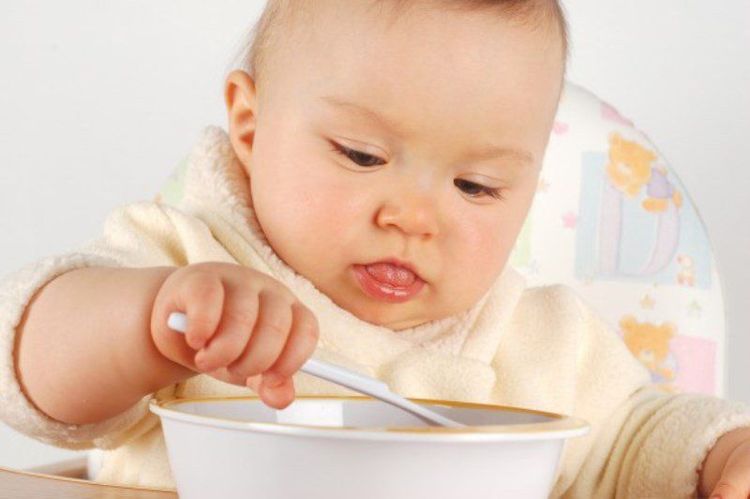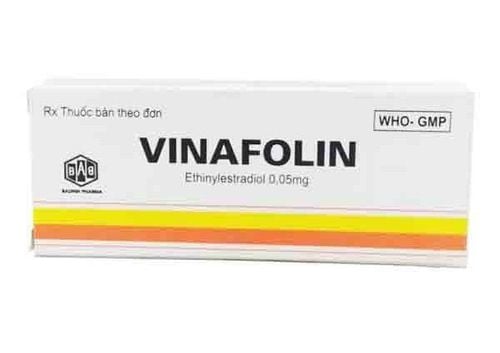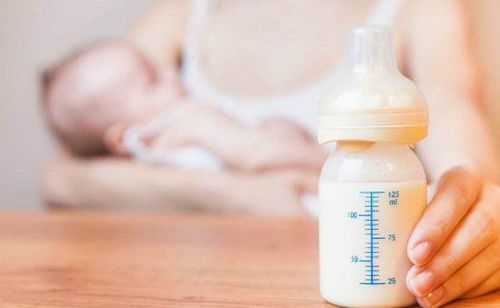This is an automatically translated article.
The article was professionally consulted by Dr. Phan Nguyen Thanh Binh - Head of Nutrition - Dietetics Department - Department of Pediatrics - Neonatology, Vinmec Central Park International General Hospital.How to take care of children's nutrition in the transition period is always a concern of mothers. Weaning is also one of the important times, if not cared for properly and scientifically, at this stage, children are very susceptible to eating disorders, lack of nutrients, reduced immunity, and easily infected. On the contrary, if there is a good care and nutrition regime, the baby will continue to grow and develop healthy.
1. When should we wean?
During the first 6 months: breast milk is the best natural food for babies. In addition to a complete and balanced nutritional composition, suitable for the digestive and absorption system of the baby, breast milk also has antibodies to help strengthen the child's resistance against infections. Breastfeeding will reduce the risk of malnutrition, obesity, chronic non-communicable diseases in adulthood, especially cardiovascular disease, hypertension, diabetes... mother completely in the first 6 months without giving the baby any other food or drink (including water).For children aged 6 - 24 months, breast milk is still an important food source, meeting 70% of the energy needs at 6 - 8 months of age, 55% at 9 - 11 months and 40% when the child is 12-24 months old. Therefore, breastfeeding should be continued for up to 2 years with complementary feeding.
However, the reality today is that many mothers who have to return to work after 6 months, or do not have enough milk, or are pregnant again need to consider weaning earlier than the time the baby is 24 months old.
2. Weaning like?

Cai sữa bằng cách nào để khỏe mẹ khỏe con?
When starting the weaning phase, the mother should gradually reduce the feedings and instead use a bottle, ask relatives to breastfeed, take care of the baby, not wean immediately. In addition, the mother should only play and cuddle with the child when the child has had enough to eat, this action will help maintain the close relationship between the mother and the baby, giving the child the feeling that the mother is still loved and close.
Weaning is a whole process, so it must be done slowly, not too hastily, it is advisable to reduce breastfeeding and increase meals with post-weaning foods that children love, at the same time. Thus, children will be more accepting without being traumatized.
When weaning children, mothers also need to be mentally prepared to face situations such as blocked milk ducts, breast abscesses, mastitis... when the child sulks and cries for breast milk, the mother must be patient. decide for children to gradually adapt.
3. Notes when weaning children
Choosing the weaning time for children is also one of the important factors, mothers should only wean when the child is healthy because if the child is sick or uncomfortable, it will be very difficult for the baby to adapt to new and easy changes. causing anorexia and malnutrition.Stopping breastfeeding can cause stress and anorexia in children, so it is necessary and important to build a diet for children after weaning. , a diet with adequate nutrients will help your baby continue to develop well. Absolutely do not force children to eat too much, it will make them uncomfortable and prone to vomiting, causing psychological fear of eating.
4. Reasonable dietary supplement

Dinh dưỡng và chế độ ăn cho trẻ sau cai sữa
Starch from cereals and tubers is the main source of energy in the diet.
Protein group from animal protein sources and beans to provide protein, iron, zinc, vitamin A...
Fat group from grease is a source of additional energy, making food soft and easy to swallow, copper It is also a solvent to dissolve fat-soluble vitamins (vitamins A, D, E, K).
Group of vitamins and minerals from vegetables and fruits to help children prevent micronutrient deficiency.
Energy from complementary foods is about 200 - 300 kcal/day for children aged 6 - 8 months, 300 - 400 kcal/day for children from 9 - 11 months old and 500 - 700 kcal/day at 12 - 24 months old month old. The remaining energy is provided by milk.
The number of meals and the quantity of each meal is gradually increased by month of age to suit the stomach capacity of the child: 2 meals/day, each meal is 100 - 150ml for children aged 6 - 8 months; 3 meals/day, each meal 200ml for children from 9-11 months old; 3 meals/day, each meal 250ml for children from 12-24 months old.
Children after weaning need to supplement zinc to eat well, reach the correct height and weight and exceed the standard. Zinc plays a role in affecting most biological processes taking place in the body, especially the breakdown of nucleic acids, proteins... Organs in the body when zinc deficiency can lead to a There are a number of diseases such as neurological disorders, irritability, etc. Therefore, parents need to learn about the role of zinc and guide them to appropriate zinc supplements for their children.
In addition to zinc, parents also need to supplement their children with other important vitamins and minerals such as lysine, chromium, B vitamins,... errands.
Please regularly visit Vinmec.com website and update useful information to take care of your baby and family.














